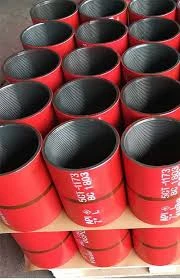- Afrikaans
- Albanian
- Amharic
- Arabic
- Armenian
- Azerbaijani
- Basque
- Belarusian
- Bengali
- Bosnian
- Bulgarian
- Catalan
- Cebuano
- Corsican
- Croatian
- Czech
- Danish
- Dutch
- English
- Esperanto
- Estonian
- Finnish
- French
- Frisian
- Galician
- Georgian
- German
- Greek
- Gujarati
- Haitian Creole
- hausa
- hawaiian
- Hebrew
- Hindi
- Miao
- Hungarian
- Icelandic
- igbo
- Indonesian
- irish
- Italian
- Japanese
- Javanese
- Kannada
- kazakh
- Khmer
- Rwandese
- Korean
- Kurdish
- Kyrgyz
- Lao
- Latin
- Latvian
- Lithuanian
- Luxembourgish
- Macedonian
- Malgashi
- Malay
- Malayalam
- Maltese
- Maori
- Marathi
- Mongolian
- Myanmar
- Nepali
- Norwegian
- Norwegian
- Occitan
- Pashto
- Persian
- Polish
- Portuguese
- Punjabi
- Romanian
- Russian
- Samoan
- Scottish Gaelic
- Serbian
- Sesotho
- Shona
- Sindhi
- Sinhala
- Slovak
- Slovenian
- Somali
- Spanish
- Sundanese
- Swahili
- Swedish
- Tagalog
- Tajik
- Tamil
- Tatar
- Telugu
- Thai
- Turkish
- Turkmen
- Ukrainian
- Urdu
- Uighur
- Uzbek
- Vietnamese
- Welsh
- Bantu
- Yiddish
- Yoruba
- Zulu
api tubing and casing chart
Understanding API Tubing and Casing Charts
In the oil and gas industry, the proper selection and use of tubing and casing are crucial for ensuring efficient extraction and safety in well operations. One essential resource that engineers and drilling personnel utilize is the American Petroleum Institute (API) tubing and casing chart. This chart serves as a comprehensive guide, detailing various specifications, dimensions, and performance characteristics of different pipe grades used in drilling applications.
What is API Tubing and Casing?
API tubing refers to the pipes conveyed into oil and gas wells for the purpose of transporting hydrocarbons from reservoirs to the surface. On the other hand, casing refers to the pipe that lines the borehole of a well, ensuring that the well retains its structural integrity and preventing the collapse of the unstable rock formations surrounding it. The casing also plays a vital role in isolating the various underground reservoirs, preventing cross-flow of fluids, and protecting fresh water aquifers from contamination.
Importance of the API Chart
The API tubing and casing chart is significant for several reasons. Firstly, it standardizes pipe specifications, which facilitates easier communication and understanding among professionals in the industry. The chart categorizes tubing and casing based on various criteria such as size, weight, grade, and yield strength. This uniformity allows engineers to determine the appropriate materials for different well conditions.
Secondly, the chart assists in defining the physical properties of the pipes. For instance, it outlines the nominal pipe size, outside diameter, wall thickness, and weight per unit length. These parameters are critical when calculating the load-bearing capacity and ensuring that the selected pipes can withstand the pressures encountered during drilling and production.
Key Components of the API Tubing and Casing Chart
api tubing and casing chart

The API tubing and casing chart consists of several sections, each with its own specific information
1. Size and Grade The chart lists various sizes of tubing and casing and corresponding grades. Grades are designated by specific letters (e.g., J55, K55, N80) that represent the yield strength of the material. Selecting the correct grade is essential, as it affects the performance of the well under different pressures and temperatures.
2. Dimensions For each size and grade, the chart provides critical dimensional data such as the outside diameter, wall thickness, and weight of the pipe. This information is essential for assembly and compatibility with other equipment used in the drilling process.
3. Performance Ratings The chart typically includes performance ratings under different conditions, helping engineers select the right tubing and casing for specific well environments, such as deep-water drilling or high-pressure scenarios.
4. Corrosion Resistance Some charts may also highlight corrosion-resistant grades, which are vital for wells that operate in harsh environments. Choosing the proper materials can significantly extend the lifespan of the well and reduce maintenance costs.
Conclusion
The API tubing and casing chart is an indispensable tool in the oil and gas industry, aiding professionals in making informed decisions about the materials they use in drilling operations. By ensuring that the correct specifications and grades are used, companies can enhance safety, efficiency, and longevity in their well operations. As drilling technology evolves and new challenges arise, the importance of such charts will only continue to grow, reinforcing the need for standardized practices in the pursuit of energy resources. Understanding and effectively utilizing the API tubing and casing chart is paramount for any engineer or technician involved in oil and gas exploration and production.
-
Tubing Pup Joints: Essential Components for Oil and Gas OperationsNewsJul.10,2025
-
Pup Joints: Essential Components for Reliable Drilling OperationsNewsJul.10,2025
-
Pipe Couplings: Connecting Your World EfficientlyNewsJul.10,2025
-
Mastering Oilfield Operations with Quality Tubing and CasingNewsJul.10,2025
-
High-Quality Casing Couplings for Every NeedNewsJul.10,2025
-
Boost Your Drilling Efficiency with Premium Crossover Tools & Seating NipplesNewsJul.10,2025







